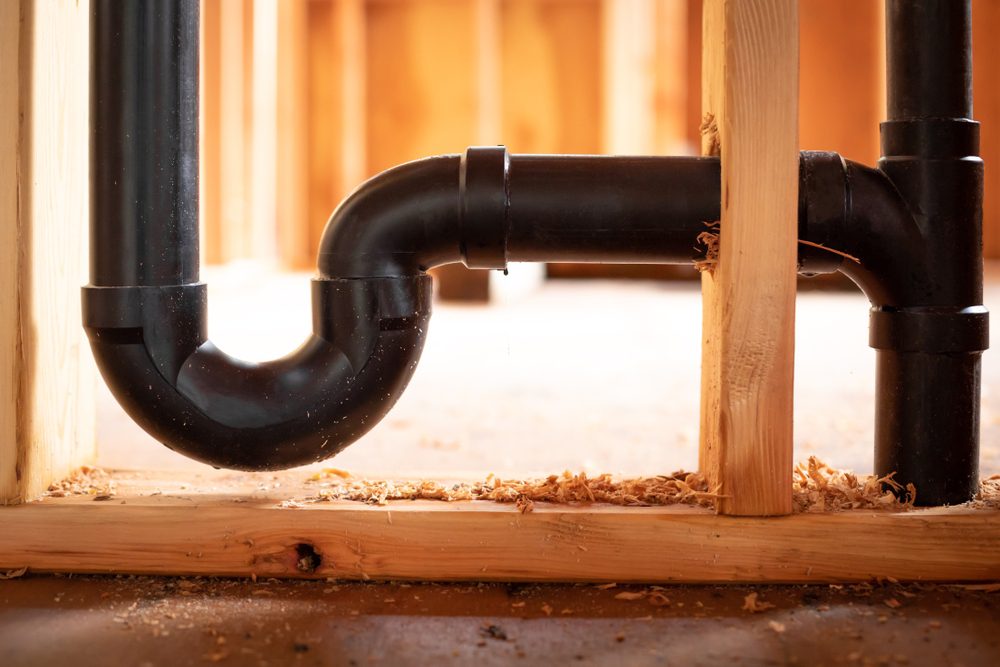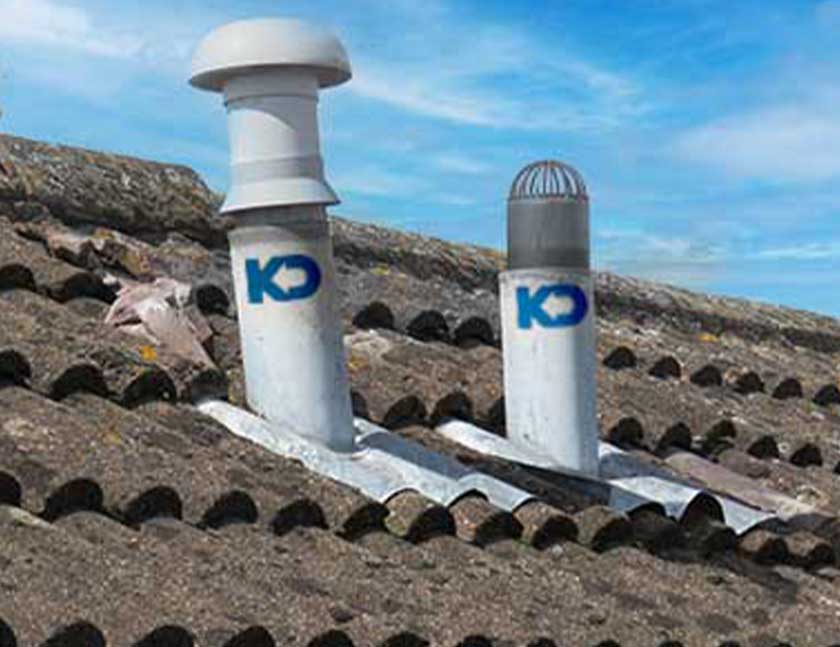The Significance of Adequate Ventilation in Your Home's Plumbing Systems
The Significance of Adequate Ventilation in Your Home's Plumbing Systems
Blog Article
What are your concepts about The Upsides of Proper Ventilation in Plumbing Design?

Correct air flow in plumbing systems is usually overlooked, yet it is critical for keeping the capability and safety of your home's pipes. Air flow helps regulate atmospheric pressure, stop the buildup of unsafe gases, and guarantee the efficient elimination of waste. In this overview, we will certainly check out the value of appropriate pipes air flow, exactly how it functions, and the advantages it gives your pipes system.
Just How Air Flow Works in Pipes Equipments
Atmospheric Pressure Regulation
Correct air flow keeps well balanced air pressure within the plumbing system. When water streams with pipelines, it displaces air. Without adequate ventilation, this displacement can develop negative stress, leading to slow drains or siphoning of water from traps, which can create unpleasant odors to permeate into the home.
Avoiding Drain Gas Buildup
Among one of the most vital features of pipes vents is to stop drain gases, such as methane and hydrogen sulfide, from gathering within the home. These gases can position major health and wellness threats and are highly flammable. Vent pipes permit these gases to run away securely outside.
Helping in Waste Removal
Air flow aids in the reliable removal of wastewater by protecting against airlocks in the water drainage system. When air can stream freely via the vents, it enables water and waste to flow smoothly via the pipes, lowering the threat of obstructions and backups.
Benefits of Correct Ventilation
Enhanced System Efficiency
Correctly ventilated plumbing systems operate a lot more successfully, with less blockages, faster draining pipes, and less strain on the pipes. This performance expands the life-span of the pipes system.
Improved Air High Quality
By avoiding sewer gases from entering your home, correct air flow adds to far better interior air quality, making your living setting healthier and much more comfortable.
Stopping Water Damages
Adequate air flow helps protect against water from being siphoned out of traps, which can bring about drain gases entering the home and causing water damages over time.
Actions to Make Sure Proper Air Flow
Consulting Pipes Codes
Always speak with local pipes codes when making or modifying your pipes system. These codes offer the needed guidelines for proper venting and ensure your system meets safety and security requirements.
Regular Examination and Maintenance
Normal evaluations can aid determine prospective air flow issues prior to they become significant problems. Maintenance tasks, such as cleansing vent pipes and checking for obstructions, are important for maintaining the system in good working order.
Specialist Installment
For brand-new installations or major modifications, it's a good idea to employ an expert plumber. They have the know-how to make certain the air flow system is correctly developed and installed according to code.
Recognizing Air Flow in Plumbing
Ventilation in plumbing refers to the network of pipelines that allow air to flow through the water drainage system. These vents serve multiple objectives, including regulating air pressure within the pipelines, stopping sewer gases from going into the home, and assisting in the smooth flow of wastewater.
Sorts Of Pipes Vents
Main Heap Vent
The major stack vent, likewise called the vent stack, is the main vent in a pipes system. It expands from the main drain line up through the roofing system, enabling gases to get away and fresh air to get in the system.
Branch Vent
Branch vents attach to the main stack air vent and serve private fixtures, such as sinks, toilets, and showers. These vents ensure that each component has ample air flow to work appropriately.
Air Admittance Valve (AAV).
An Air Admission Valve (AAV) is a one-way shutoff that permits air to enter the pipes system without the demand for a traditional vent pipeline prolonging through the roof. AAVs are frequently used in renovations or locations where mounting a common vent is unwise.
Indicators of Poor Air Flow in Pipes.
Slow Draining Fixtures.
If your sinks, bathtubs, or commodes are draining gradually, maybe a sign of poor ventilation. Poor air flow can produce a vacuum cleaner result, making it difficult for water to drain appropriately.
Gurgling Sounds.
Gurgling noises originating from drains pipes are often a result of air being sucked through water catches due to negative stress in the pipes. This is a clear sign of inadequate ventilation.
Unpleasant Odors.
Sewer odors inside your home are a warning that your plumbing system is not properly aerated. This might mean that drain gases are not being properly vented outside, causing possibly unsafe problems.
Usual Air Flow Blunders.
Insufficient Vent Sizing.
Utilizing undersized vent pipes can cause poor air flow and stress imbalances in the system. It's necessary to make use of vents that satisfy the particular requirements of your pipes system.
Improper Vent Placement.
Putting vents also much from the fixtures they offer can reduce their performance. Appropriate placement guarantees that air can stream easily and efficiently through the system.
Disregarding Code Demands.
Building ordinance supply details standards for pipes air flow. Overlooking these codes can lead to a system that stops working to operate properly and may bring about expensive repair services or health hazards.
Final thought.
Proper ventilation is a critical element of any type of pipes system, making certain that it functions successfully and securely. By understanding the value of air flow, recognizing the indicators of inadequate ventilation, and taking actions to keep your system, you can protect against costly issues and secure your home's air top quality.
4 Things You Should Know About Your Plumbing Vents
What Plumbing Vents Are
Also called a vent stack, a plumbing vent is a vertical pipe attached to your drain line that runs through your roof. The plumbing vent pipe, or plumbing air vent, removes gas and odors from your plumbing system and allows fresh air to enter the pipes, helping the water to flow out of the drain pipes.
What Plumbing Vents Do
Plumbing vents have two basic functions. One of which is to allow unpleasant smelling wastewater and sewer gasses to escape your plumbing system instead of entering your home. Plumbing vent pipes are typically located on roofs, away from windows, to ensure the fumes exit the home completely.
The other function of the plumbing vent is to move fresh air into your plumbing system. This helps move water through every plumbing fixture in your house, like toilets and sink drains. Think of the way in which you need to let a little air into the bottle as you pour soda in order to make the drink flow smoothly.
Different Types of Plumbing Vents
True vent: This is the most common vent option. In simplest terms, a true vent is a vertical pipe attached to your drain line that exits through the roof. They often function as the main vent that other fixtures can connect to. Re-vent pipe or auxiliary vent: Attached to the drain line near specific plumbing fixtures, re-vent pipes run up and over to connect to the main vent. Common vent: Two plumbing fixtures installed on opposite sides of a wall are typically tied into the vent stack using something known as a sanitary cross. Wet vent: This venting option operates as a drain pipe and a vent at the same time. Wet vent drainage systems drain water from one fixture while venting the air from another. Although they’ve been used for over 100 years, wet vent systems have only recently been added to the plumbing code in many areas. If you’re planning on installing one in a bathroom remodel, make sure you check your local code prior to construction. Loop vent: For free-standing fixtures like kitchen island sinks, loop vents are ideal. These vent pipes run under the floor, rise from the P-trap, and create a loop inside the cabinet sink. Air admittance valve: An AAV is a one-way mechanical valve typically installed at the site of the plumbing fixture. AAVs allow venting to occur without having to tie into a larger venting system. They’re ideal for venting fixtures where you aren’t able to easily connect to an existing vent system. Common Plumbing Vent Issues
Although vent pipes typically don’t have water flowing through them, they’re still subject to many typical plumbing issues. For example, clogs are one of the most common problems associated with sewer vent pipes. If your vent pipe gets clogged, all of your plumbing fixtures tied into the vent stack will be affected.
A sink with a slow drain that bubbles and gurgles or a strong sewage smell around your toilet are both indicators that your toilet vent pipe is clogged. Because most vent pipes exit through the roof, old leaves, twigs or even a bird’s nest could be clogging the pipe.
Clogs in your vent pipe system cause a buildup of negative pressure, meaning that water won’t be able to flow out of your home very well. It’s similar to putting your finger over the opening of a straw to trap water inside. When you remove your finger, the water is able to flow out of the straw.
If you suspect you have any blockage in your vent, make sure you have a professional come examine the situation. Left unchecked, a blocked air vent can lead to other costly repairs, like leaks and sediment buildup.
Under Pressure
Pipe vents are essential aspects of a home’s plumbing system. Owning a home means learning about all sorts of things you never put much thought into before. But by understanding as much as you can about the important systems of your home, you can keep those budgets intact and those anxiety levels low.
https://www.homeserve.com/en-us/blog/home-improvement/plumbing-vents/

I was shown that report about Why Plumbing Air Vents Are Important through an associate on our other site. Feel free to set aside a second to promote this blog entry if you appreciated it. Thanks so much for taking the time to read it.
Quote & Schedule Report this page